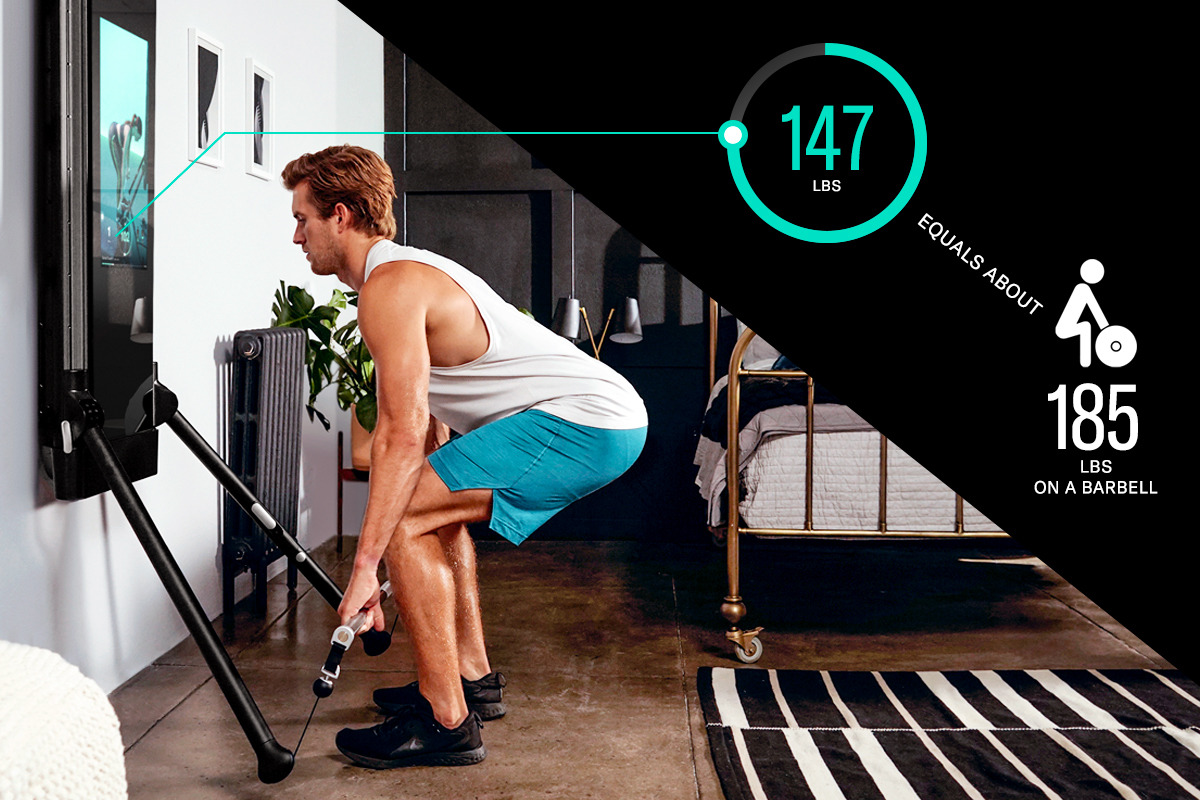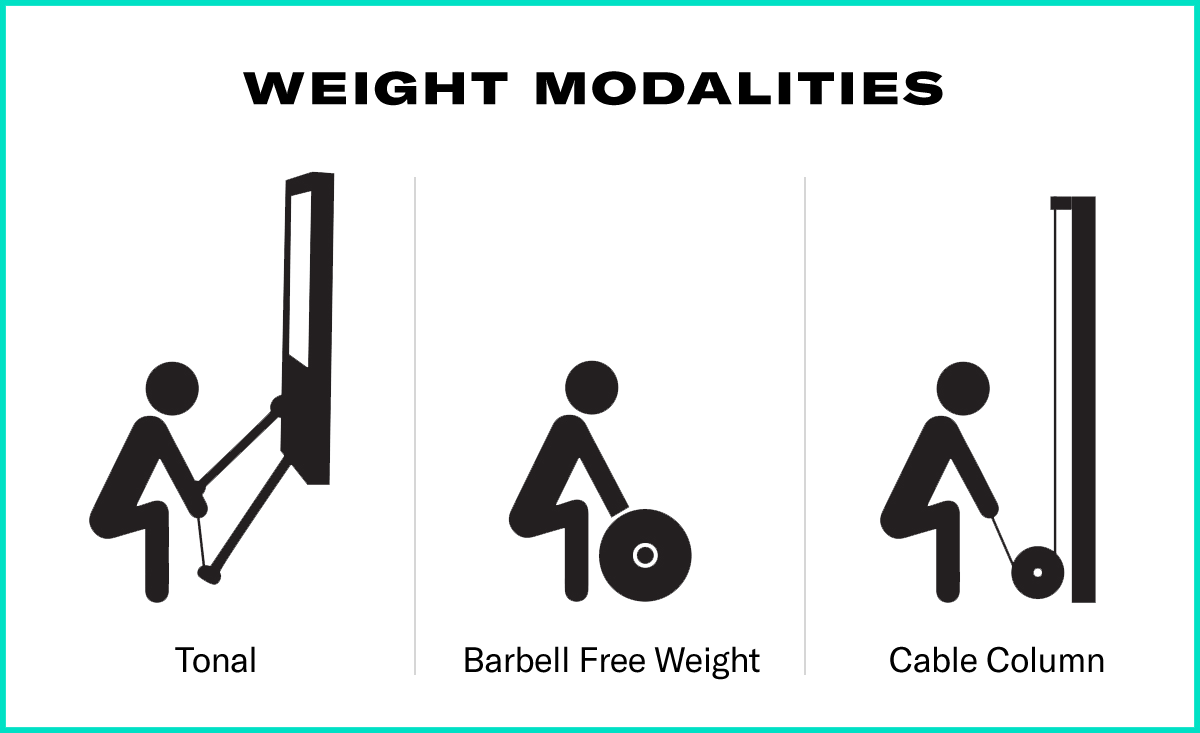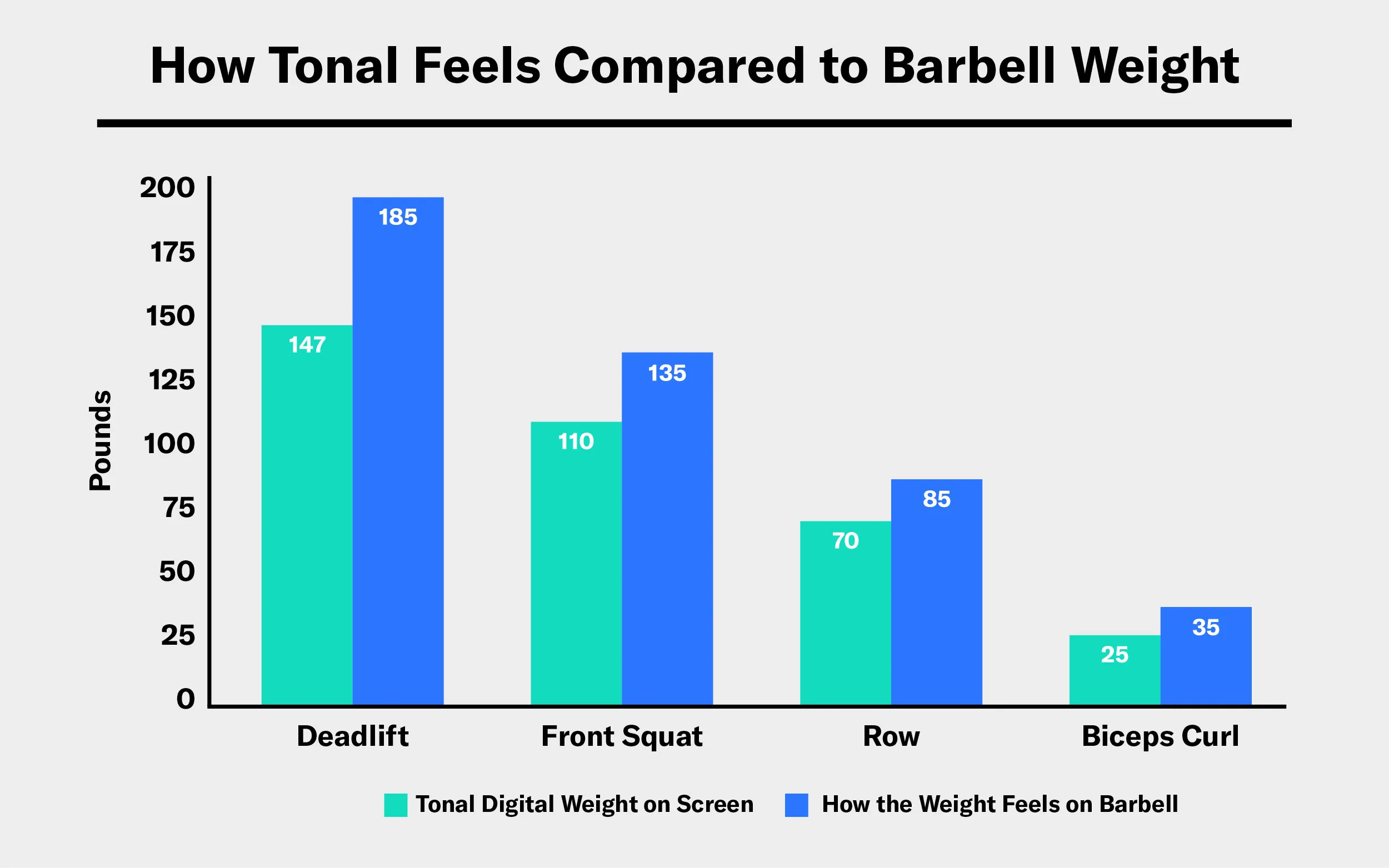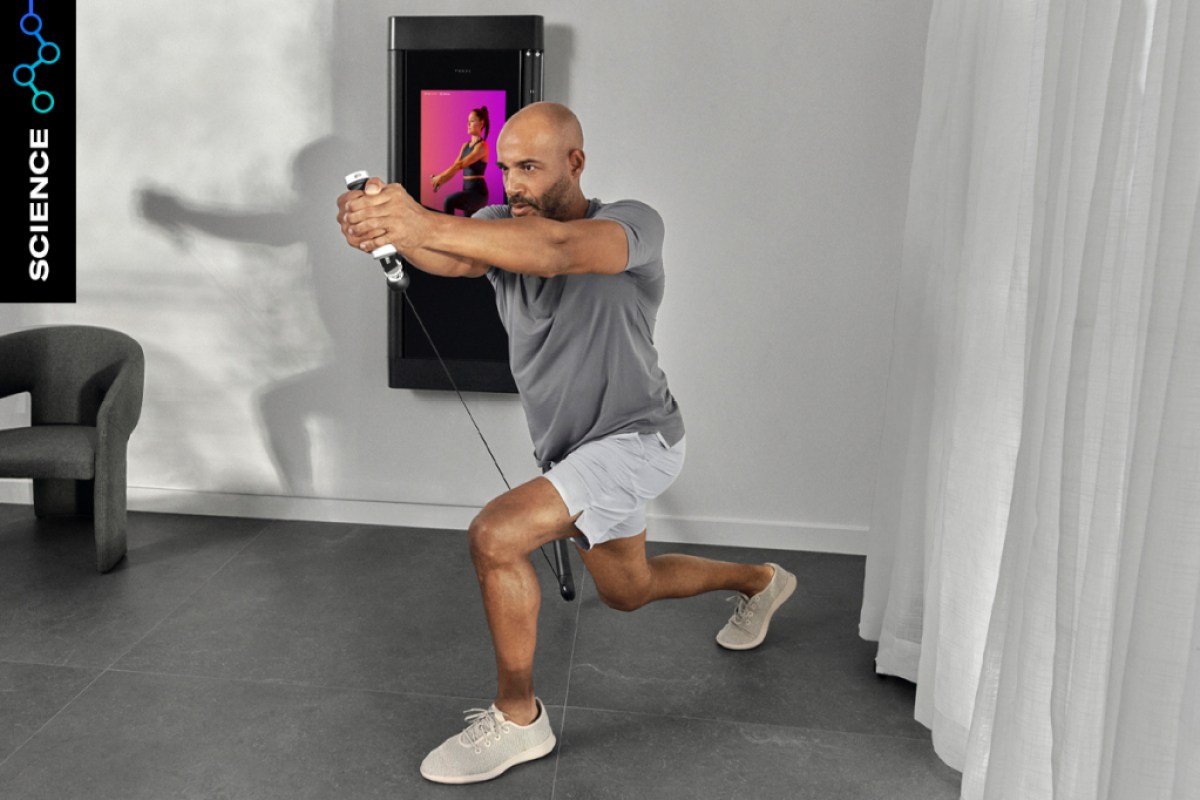You asked, we answered: External research explains how Tonal digital weight compares to free weight and cable resistance.

- In an independent study, researchers compared Tonal to barbell free weights and a pin-loaded cable column machine often found in most gyms.
- In total, five different exercises representing different muscle groups were analyzed.
- The study found Tonal can feel about 23-percent heavier than free weight, based on rate of perceived exertion (RPE).
- That premium increased at higher weights, with the actual top end of Tonal’s resistance is the hypothetical equivalent to the feel of as many as 260 pounds of free weight.* Note: On Tonal 2, this would make the top the hypothetical equivalent of 307.5 pounds.
- These findings were supported by a muscle activation test, which showed Tonal was able to achieve the same muscle activation as free weights at lower loads.
One biceps curl is all it takes to realize that Tonal’s digital weight isn’t just more convenient than free weights, it also feels heavier than you might expect. A new study out of High Point University in North Carolina sheds light on what that means for your muscles when you train on the platform. Researchers found that Tonal packs more muscle-building stimulus in every rep, set, and workout than conventional free weights.
The Study
A team of PhDs and sports medicine professionals from the Human Biomechanics & Physiology Laboratory at High Point University set out to find the difference between muscle activation and perceived weight during exercises performed with Tonal digital weight, barbell free weights, and cable column resistance.
During the study, 15 recreationally-active adults between the ages of 18 and 35 completed several exercise sessions in a random order over a six-week period. The participants visited the lab six times, twice for each form of weight. The first session consisted of an intro and a one repetition maximum (1RM) test for four common exercises—deadlifts, bent-over rows, front squats, and biceps curls. The second session consisted of a set of 10 reps for each exercise using 75 percent of the 1RM test.

Researchers measured muscle activation using electromyography (EMG)—a state-of-the-art measurement taken by attaching electrodes to the muscle—on five muscle groups during each test: gluteus maximus, rectus femoris (quadriceps), hamstrings, posterior deltoid (rear shoulder), and biceps brachii. The participants also rated how heavy the weight felt during the trial with the RPE scale of one to 10.
The Results
The researchers found that Tonal resistance had comparable muscle activation as barbell and cable column weight. When muscle activation was similar though, the Tonal digital weight felt heavier and equated to anywhere from 16 to 26 percent more weight than the free weights and cable column. Translation: You get more muscle activation per rep when Tonal digital weight is set to the exact same weight as free weights.
“The idea was, could you get the same type of targeted muscle activation if you use the [Tonal] system versus traditional free weights? And I think we showed that you can,” said Kevin R. Ford, PhD, a sports medicine and biomechanics researcher and the lead researcher of the study.
For example, when you lift 110 pounds of digital weight on Tonal, it would feel heavier and show the same EMG activation of about 135 pounds on a traditional barbell. Hypothetically, a digital weight of 198 pounds on Tonal would equate to around 260 pounds on the barbell during a heavy lift such as a conventional deadlift.

The data gathered in this study revealed that Tonal’s max weight of 200 pounds hypothetically feels closer to 260 pounds of traditional weight, meaning the digital weight system may give you a bigger bang for your buck in each lift.
The main reason why Tonal weight feels heavier than barbell free weights comes down to how the resistance is generated. The digital weight on Tonal is produced by an electromagnetic motor that takes the natural momentum you’d normally experience with free weights out of the equation. You have to generate more force in the muscle to keep the cable moving.
While the sample size in this study was small, it is standard with typical human trials in sports science and was adequate to run the appropriate statistical tests to quantify these results. And while the researchers reported the data as the mean (average) of all of the participants, every person responds differently.

The Benefits
The results of this study help quantify the difference between digital weight and free weights both objectively via EMG measurements and subjectively through the RPE scale.
“It’s very helpful for those who are on the fence about whether digital weight is heavy enough for them,” said Troy Taylor, Senior Director of the Tonal Strength Institute. “With the Tonal system [potentially] feeling closer to 260 pounds at its max, it’s the advantages of the AI technology that set it apart from traditional training.”
Ford agreed, saying, “I think that’s important when you’re putting a new device out there—it should be able to meet that expectation. Then, from there, find all the additional aspects that may make it better than alternative options.”
Ford went on to describe the innovative features on Tonal as being the real draw for exercisers of all levels. “Just the idea that you can increment weight so precisely is a major benefit compared to free weights or a cable column where you can only go up or down two and a half or five pounds,” he said. Ford added that all of the features such as Spotter Mode, Form Feedback, and Eccentric Mode have a vast potential in optimizing performance.
Taylor also cited Tonal’s many safety features as further advantages to conventional free weights. “Spotter Mode, which spots you like a trainer would, ensures you can complete reps and sets safely,” he said. “And the smart accessories allow you to turn the weight on and off instantly with the click of a button so you can get in and out of positions without injury.”
Research funded by Tonal and performed in partnership with
Kevin R. Ford, PhD, FASM
Paul W. Kline, PT, PhD, DPT
Christopher D. Johnston, PhD, ATC
Human Biomechanics & Physiology Laboratory, Congdon School of Health Sciences, High Point University
*Conversions based on a regression equation provided by the researchers, an equation that predicts the relationship between two variables. The regression equations provided in this study showed statistical and clinical significance.



